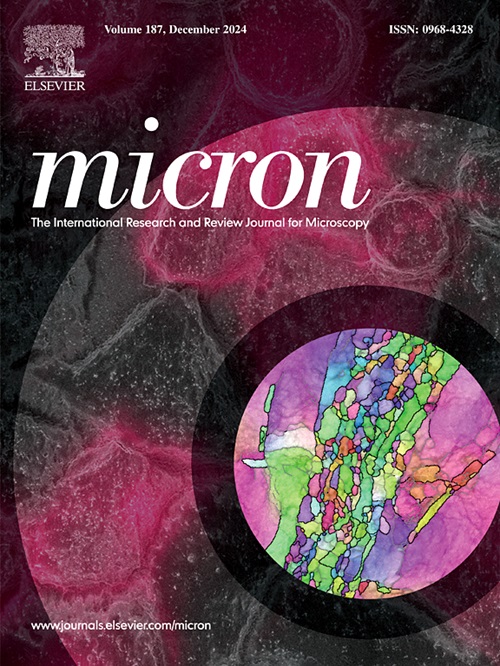Visualizing the Li distribution in an all-solid-state battery composite electrode using combined plasma focused-ion beam microscopy and secondary-ion mass spectroscopy
IF 2.2
3区 工程技术
Q1 MICROSCOPY
引用次数: 0
Abstract
Using a Li metal anode, the all-solid-state battery (ASSB) promises a step change in specific energy over Li-ion batteries and the potential for increased battery safety. ASSBs rely critically on the efficient movement of Li charge carriers through a Li-conducting solid electrolyte (SE) separator and throughout a composite cathode (CC) comprising active particles, particulate SE, polymeric binder, and carbon. Unfortunately, there is no readily accessible laboratory method to visualise Li distributions at both particle and electrode scales to help understand and optimise Li electrode dynamics in ASSBs. We report a method to map all electrode elements in a 3D volume, including Li, within a typical ASSB composite cathode. The method combines a xenon plasma focused-ion beam (PFIB) for 3D milling, energy dispersive X-ray spectroscopy (EDS) to map non-Li elements, and secondary ion mass spectrometry (SIMS) to map Li. We manipulate 3D EDS and SIMS datasets into a common format and then recombine them in 3D to differentiate the different materials at high resolution. This new approach can be applied to understand and optimise the role of microstructure in controlling ASSB performance.
利用等离子体聚焦离子束显微镜和二次离子质谱技术观察全固态电池复合电极中锂离子的分布
使用锂金属阳极,全固态电池(ASSB)有望在比能量上比锂离子电池有一个台阶的变化,并有可能提高电池的安全性。assb主要依赖于锂载流子通过锂导电固体电解质(SE)分离器和复合阴极(CC)的有效移动,复合阴极由活性颗粒、颗粒SE、聚合物粘合剂和碳组成。不幸的是,没有现成的实验室方法来可视化颗粒和电极尺度上的锂分布,以帮助理解和优化assb中的锂电极动力学。我们报告了一种方法来映射所有的电极元素在一个三维体积,包括锂,在一个典型的ASSB复合阴极。该方法结合了用于3D铣削的氙等离子体聚焦离子束(PFIB)、用于绘制非Li元素的能量色散x射线光谱(EDS)和用于绘制Li元素的二次离子质谱(SIMS)。我们将3D EDS和SIMS数据集转换为通用格式,然后在3D中重新组合,以高分辨率区分不同的材料。这种新方法可以应用于理解和优化微观结构在控制ASSB性能中的作用。
本文章由计算机程序翻译,如有差异,请以英文原文为准。
求助全文
约1分钟内获得全文
求助全文
来源期刊

Micron
工程技术-显微镜技术
CiteScore
4.30
自引率
4.20%
发文量
100
审稿时长
31 days
期刊介绍:
Micron is an interdisciplinary forum for all work that involves new applications of microscopy or where advanced microscopy plays a central role. The journal will publish on the design, methods, application, practice or theory of microscopy and microanalysis, including reports on optical, electron-beam, X-ray microtomography, and scanning-probe systems. It also aims at the regular publication of review papers, short communications, as well as thematic issues on contemporary developments in microscopy and microanalysis. The journal embraces original research in which microscopy has contributed significantly to knowledge in biology, life science, nanoscience and nanotechnology, materials science and engineering.
 求助内容:
求助内容: 应助结果提醒方式:
应助结果提醒方式:


